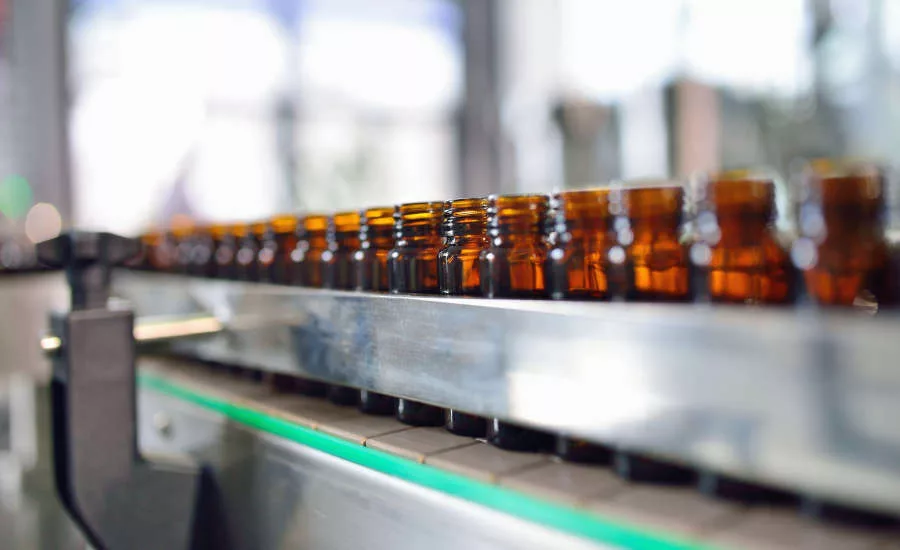2020 STATE OF THE INDUSTRY
State of the Industry in Food Safety: Processing and Packaging

Processing and packaging are important facets of food safety—food processors and manufacturers need to ensure they are choosing the correct packaging for their product, and also that the product will arrive in stores safely.
Top areas of concern
Jorge Izquierdo, vice president, market development, PMMI, Herndon, VA, says that the largest industry sector in terms of shipment revenues of packaging machinery is estimated to have been food (39.3 percent of shipment revenues) in 2019, followed by beverages (21.2 percent). “Over half of food companies are using more flexible materials for packaging than rigid, thus paper use is growing due to food manufacturers seeking a substitute for non-biodegradable packaging options,” he explains.
New materials in development are pushing beyond the norm to find sustainable solutions—in 2015, the USDA joined with the U.S. Environmental Protection Agency to set a goal to cut the nation’s food waste by 50 percent by the year 2030, notes Izquierdo.
“Truly innovative solutions are emerging in the last few years as a result, with the industry rising to meet the challenge. Thus, companies are pursuing packaging trends that will reduce by-products, reduce waste streams, and offer more upcycling,” Izquierdo says.
According to Izquierdo, trends include:
Food Safety Summit on Demand

Novel Processing Technologies—Validation, Application, Regulation
Presenters:
- Brendan Niemira, Ph.D., Research Leader, U.S. Dept. Agriculture, Agricultural Research Service
- Alvin Lee Ph.D., MASM, Director of the Center for Processing Innovation, Illinois Institute of Technology, School of Applied Technology
Don’t Be Labeled for Having Bad Labels
Presenters:
- John Spink, Ph.D., Director & Assistant Professor, Food Fraud Initiative, Michigan State University
- Roy Fenoff, The Military College of South Carolina
- Single-serve convenience: Single serve is on the upswing as all generations demand greater convenience.
- Reduce plastic waste: There is lots of research going on for greater sustainability and the long-term goal is to diminish or reduce plastic usage in packaging altogether with zero waste going to landfills; working to increase recycling rates overall.
- Sustainable marketing claims: The industry will see more sustainability in general, but companies need to ensure that their marketing claims are accurate.
- Reuse initiatives: Companies are looking into single use packaging that could be used for other things.
- Reuse challenges: Companies need to consider the cleaning of the package if it is to be reused, as well as necessitated changes to equipment, the supply chain, and distributors.
Better efficiency
Izquierdo says that in recent years, increasingly more packaging machinery companies have embraced automation in their packaging lines to achieve higher efficiency and productivity. These companies today are leveraging on smart manufacturing to maintain competitive advantage and meet their pressing business needs.
“Robotics has also been penetrating the packaging machinery market, parallel to the evolution of Artificial Intelligence (AI), 5G, and expanding IoT environment,” says Izquierdo. Most recently, collaborative robots, or cobots, have emerged as human-machine interfaces (HMIs) became prevalent on factory floors, says Izquierdo. “Cobots are designed to be safer for humans to work in close proximity.”
Organizations are turning their attention to implementing service capabilities that are aligned with customer needs, such as the adoption of fast and agile technology that is designed specifically for use in the packaging and processing equipment industry. ex, SMAC, predictive analysis, Machine as a Service, etc., says Izquierdo.
Looking for quick answers on food safety topics?
Try Ask FSM, our new smart AI search tool.
Ask FSM →
Other trends include:
- E-commerce: E-commerce will become an increasingly important factor in the industry, forcing packaging designed to maximize packing space. It is also motivating a trend away from glass towards pouches and easily packable trays.
- Flexible packaging: Most industry experts foresee continued growth in the flexible packaging industry, fueled by two developments: increasing consumer demands for convenient packages, and an industry push for sustainable, shelf-ready product designs.
- Sustainability: Machine modifications or adjustments are needed to achieve sustainable packaging goals, but some of the challenges CPGs face when moving to more sustainable packaging provide opportunities for OEMs to explore application details with customers:
- Secondary packaging machines such as conveyors must be able to handle material reduction strategies, including lightweight corrugated.
Pre-pandemic industry trends
There are various trends present in the food sector that affect packaging machinery, says Izquierdo. “With economic development there is a tendency towards increasingly busy lifestyles. This is fueling growth in processed convenience foods and ready to eat meals, which are perceived as convenient, but not particularly healthy options. As consumers become more health conscious, there is also a growing demand for healthy, convenient options—for example, packed sliced vegetables, ready-made salads, etc. Additionally, the rise of food delivery services have further triggered the ready to eat packaging segment,” he adds.
As with retail in general, there is a trend towards e-commerce shopping with consumers able to have their groceries delivered to their doors, Izquierdo mentions. “Also not unique to the food sector is the tendency towards more efficient and sustainable packaging. This is increasing in the food sector through the use of more easily recyclable materials. This trend is evidenced by innovative sustainable packaging materials being tested across sectors such as edible and compostable packaging, and even a solution created from juice industry by-products,” notes Izquierdo.
Additionally, consumer demand is also driving growth for reusable packaging options and in some cases food with no packaging at all, Izquierdo says. “Another initiative implemented by some retailers is offering refills rather than consumers continually buying the original package, e.g., many brands offer coffee in a glass jar that can be refilled from a small, lightweight foil package.”
Some of the factors that are affecting the beverage industry sector are also influencing the food sector, he says. These include legislation, cleanability, traceability, single-serving packaging, frequency of changes to packaging, and visibility.
“High-pressure processing (HPP) is a proven technology for numerous foods and beverages and is a cold pasteurization technique by which products, already sealed in its final package, are introduced into a vessel and subjected to a high level of isostatic pressure (300–600 MPa/43,500-87,000 psi) transmitted by water. HPP is growing strongly with a forecasted CAGR of over 7 percent through 2024. Products include numerous fresh beverages, deli meat, guacamole, salsa, wet salads, pet food, and more.”
COVID-19 impact
One main takeaway from the PMMI report, “Economic Impact of COVID-19,” is that during this pandemic, companies should find the middle ground between cost-cutting initiatives, belt-tightening and investing for the future of their company.
“There have been some positive signs that consumer activity is recovering somewhat from the double-digit lows in the late March and early April timeframe, but still obviously far from recovering in terms of levels of economic activity. The impact on the food industry was significant,” Izquierdo says.
Prepared foods manufacturers should consider packaging solutions for curbside delivery, such as tamper-evident labels for orders, suggests Izquierdo. This is a growing area within packaging, as more foodservice companies shift operations to offer more carryout and delivery during the pandemic. Single-serve packaging options have proven particularly popular.
Increased scrutiny
Jessica Stevens, food industry risk management and labeling specialist, Food Industry Counsel, LLC, Milwaukee, WI, will be speaking at the Food Safety Summit session entitled “Don’t Be Labeled for Having Bad Labels.” She says that now, more than ever, food product labels are coming under increased scrutiny by consumers, regulators and plaintiff lawyers.
“Consumers want and expect clean labels that are accurate and not misleading, the regulators are targeting and penalizing food companies for ‘going too far’ in their labeling claims, and plaintiff lawyers are attempting to recover millions of dollars from food companies who labels contain even the smallest of technical violations. In this new environment, it is critical that all food companies take steps to ensure that their labels are not targeted by the regulators or trial lawyers,” recommends Stevens.
During the presentation, Stevens examines:
- Recalls relating to labeling errors
- Consumer response to accurate and inaccurate labeling
- USDA and FDA labeling policy and current regulatory trends
- Reactions from plaintiff lawyers and the types of labeling class action claims which plaintiff lawyers are currently attempting to pursue
- The top 10 mistakes food companies make when labeling products
- How to avoid additional labeling pitfalls
“Additional hot topics we intend to cover include marketing and labeling of cannabis and CBD products, plaintiff class action lawsuits against food companies for minor labeling errors, and FDA enforcement against health and related claims in food,” Stevens notes.









